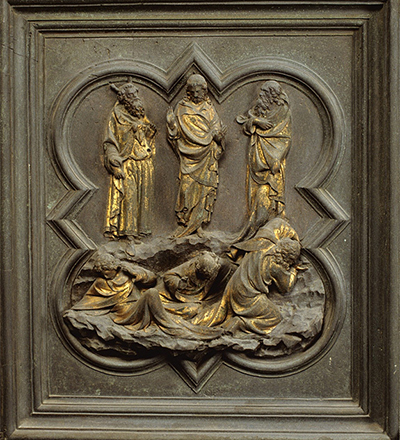The Christian tale of Jesus being transfigured provides inspiration for one of Ghiberti's bronze panels
The Synoptic Gospels described this scene in enough detail for artists to put it into a visual form within the Renaissance. It can be found in Matthew 17:1–8, Mark 9:2–8 and Luke 9:28–36 and it is also referenced by the Second Epistle of Peter. Whilst the strength of Christianity may not be as strong in some corners of the European continent as it once was, the power and emotion of this particular theme still remains clear and understood.
Of course, Ghiberti's North Doors were devoted to the life of Jesus Christ and so inevitably this narrative would appear in the series of 28 panels at some point. The story describes Jesus becoming radiant in glory above a mountain and this interpretation appears in most Renaissance versions.
The Transfiguration tells of Jesus and this three apostles going to the mountain to prayers, before Christ begins to light up. Prophets Moses and Elijah then appear next to him and Christ is named Son by a voice in the sky, presumably God. The composition in this panel appears to have Christ next to the prophets as the apostles attempt to hide from the extraordinary light that shines from Christ.
It is always intriguing to see how different artists will depict the same event, through a variety of artistic styles and mediums. The inclusion of this theme in the early 15th century was particularly frequent, as shown with the versions by Giovanni Bellini, Pietro Perugino and Raphael (titled simply Transfiguration) which were all completed within 30 years of each other.




